Wherever you look on Instagram, Tik Tok or YouTube these days, you will find oozy cheese. Whether you want to make fondue or nacho cheese sauce, read on to find out why sodium citrate is the secret ingredient you need!
[Disclaimer: This post contains affiliate links. If you use these links to make a purchase, we may earn a commission (at no cost to you)]

BUY NOW: Premium, Non GMO, Food Grade Sodium Citrate from Amazon →
Fondue: the original cheese sauce
Without a doubt, cheese fondue is one of the most famous melted cheese sauces from anywhere in the world. And there’s good reason for this. The traditional Swiss cheeses Gruyère and Vacherin Fribourgeois make up the classic combination in Moitié-Moitié and they are spectacular!
But, have you ever tried to melt those two cheeses before? Or any cheese for that matter? Whether it’s Cheddar, Gruyère or Monterey Jack, cheese will often split or become grainy when heated.
What happens to cheese when you melt it?

As we’ve explained before, cheese is a complex network of fat, casein protein and calcium. As a matter of fact, the main role of the calcium is to bind together the protein to form a robust matrix. Within that matrix you will find a mixture (emulsion) of fat and water.
When cheese is heated, the protein structure is weakened and the fat molecules begin to leak out. As a result, a piece of cheese that has been out for too long can start to “sweat”. And a sauce that contains one or more cheeses will begin to split.
The secret ingredients in fondue
Hence, the key to a successful sauce is to preserve that emulsion of fat and water as the temperature rises. And, we typically achieve this by adding an ingredient known as an emulsifying agent.
In the case of Swiss fondue, there are two additional ingredients that are added as emulsifying agents. Certainly, they both make a significant contribution to the overall flavour.
But white wine and lemon juice also each contain a secret ingredient that helps keep the sauce together. Those are tartaric acid (from wine) and citric acid (from lemon juice).
While wine and lemon juice are very effective emulsifying agents, they do have quite a strong flavour. In fondue, those flavours are desirable. However, in some other cheese sauces such as nacho cheese and queso, those flavours would clash with the other ingredients.
What is sodium citrate?
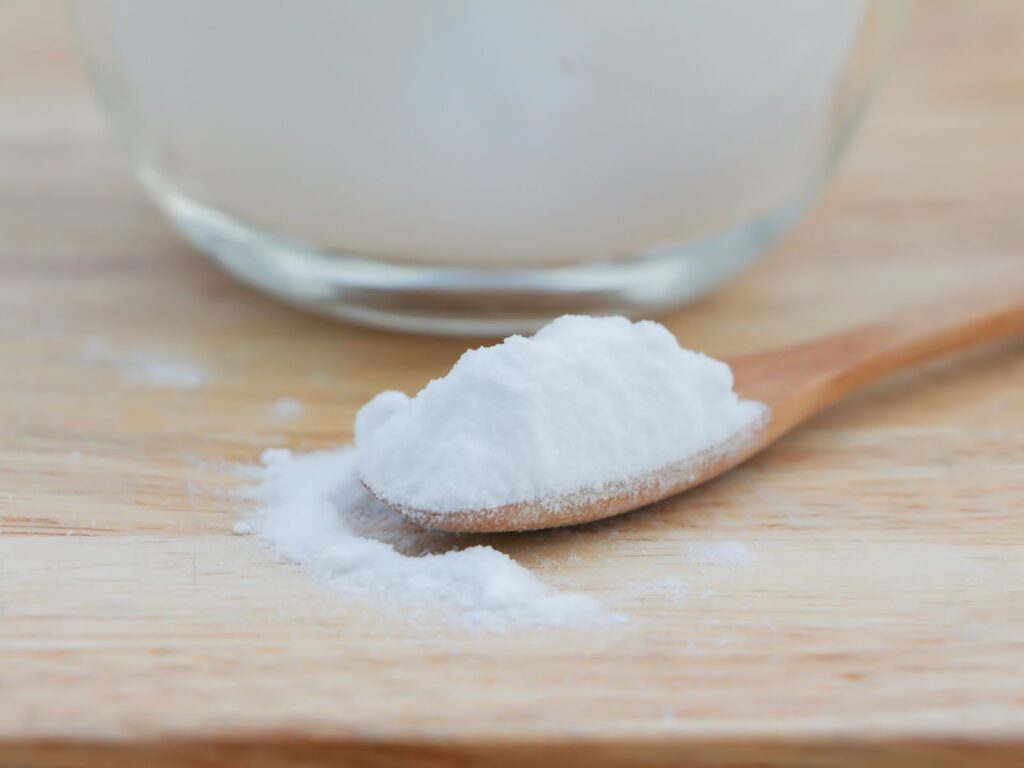
So, how can we replicate the effect of those traditional emulsifying agents without impacting the flavour? Meet sodium citrate.
Sodium citrate is a white, crystalline powder that is freely soluble that is naturally found in citrus fruits. When dissolved in water, it becomes transparent and has a slightly sour taste. In liquid form, it is an extremely powerful emulsifying agent.
Where can I buy sodium citrate?
You can actually quite easily make your own sodium citrate at home. All you would need is baking soda and citric acid which you can get from the supermarket. However, I would recommend that you buy a ready-made one instead because it will be purer and more consistent.
BUY NOW: Premium, Non GMO, Food Grade Sodium Citrate from Amazon →
What sodium citrate does to cheese
Overall, sodium citrate reduces the cheese’s acidity, strengthens the fat-water emulsion and prevents it from splitting. Consequently, the melted cheese develops a smooth, almost velvety, texture that is completely free of grainy and oily bits.
Unsurprisingly, it is an ingredient that is often used in the production of processed cheeses such as Velveeta and Kraft singles. Thanks to the sodium citrate, those cheeses melt spectacularly in grilled cheese sandwiches.
How much sodium citrate should you use?
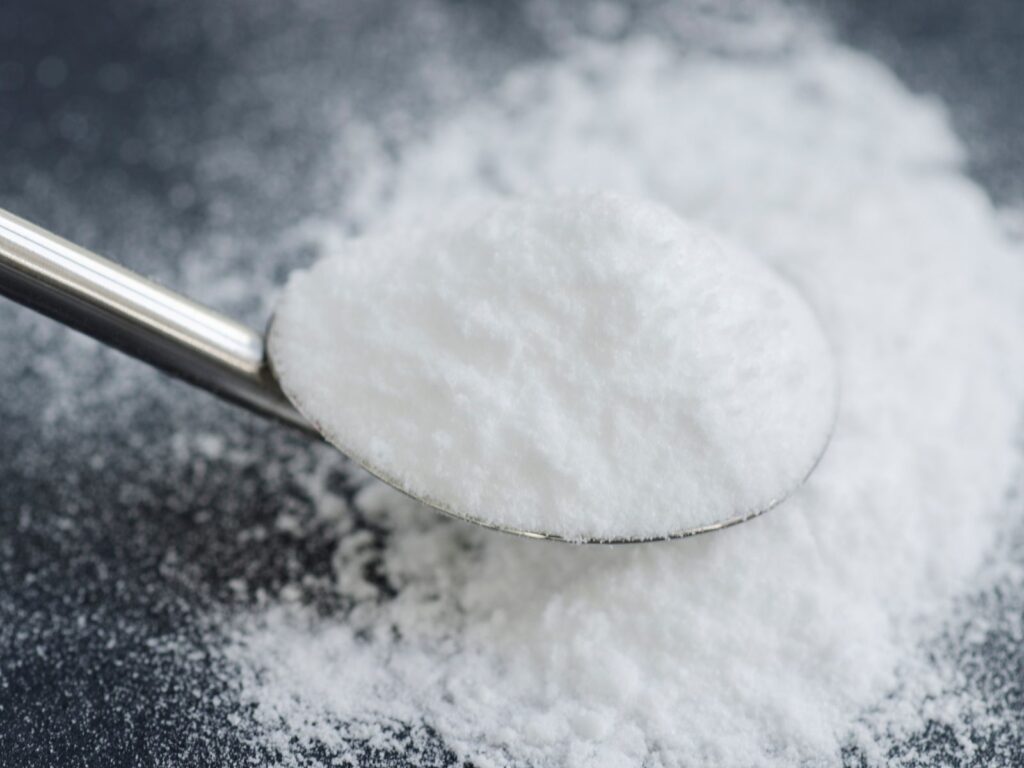
Now, this is the single most important question if you’re making a cheese sauce with sodium citrate. If you don’t add enough, your sauce could still split or it might be too runny. On the other hand, if you use too much sodium citrate, your sauce might be too dense or even grainy.
The thickness of your sauce will also vary depending on the amount of liquid (water, wine, beer, etc.) you’re using. And we’ve got some very important numbers for you.
Percentage of liquid
To keep things simple, let’s use an example where you are using 100g of Cheddar to make a sauce.
If you add between 35ml to 85ml of liquid (35% to 85%), you will produce a thick and flowing cheese sauce that’s great for dips and queso.
Conversely, using 85ml to 120ml (85% to 120%) of liquid will result in a sauce that is thinner. This type of sauce is perfect for making fondues and mac and cheese.
Sodium citrate to cheese ratio
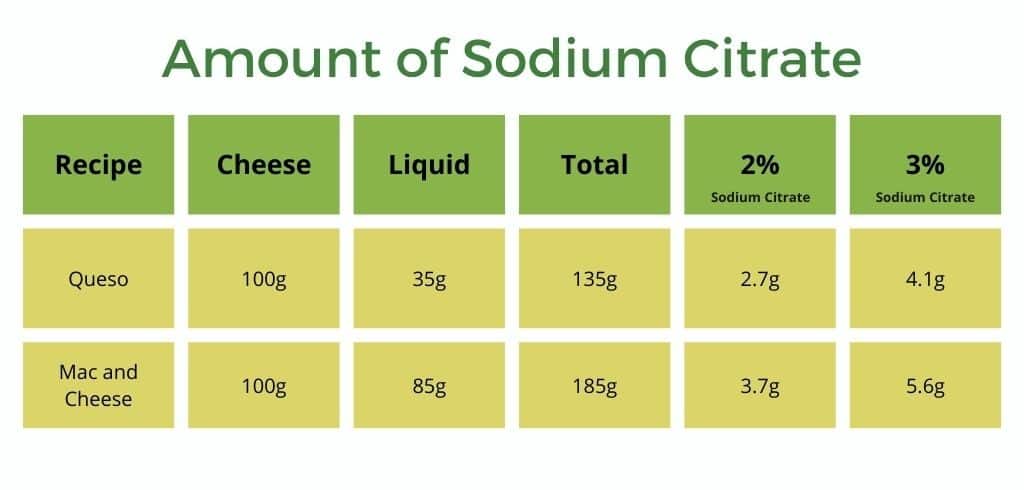
Now, the most relevant ratio is actually not the sodium citrate to cheese ratio. Instead, you need to work out the percentage of sodium citrate to total liquid (including cheese). And the goal here is something between 2% and 3%.
Using our example above, you would add between 2.7g to 4.1g of sodium citrate to your queso recipe. And between 3.7g to 5.6g of sodium citrate to your mac and cheese recipe.
Since sodium citrate has a slightly sour taste, it’s also important to keep the flavour of your dish in mind. So, let’s have a look at some great recipes using this secret ingredient.
Best recipes using sodium citrate
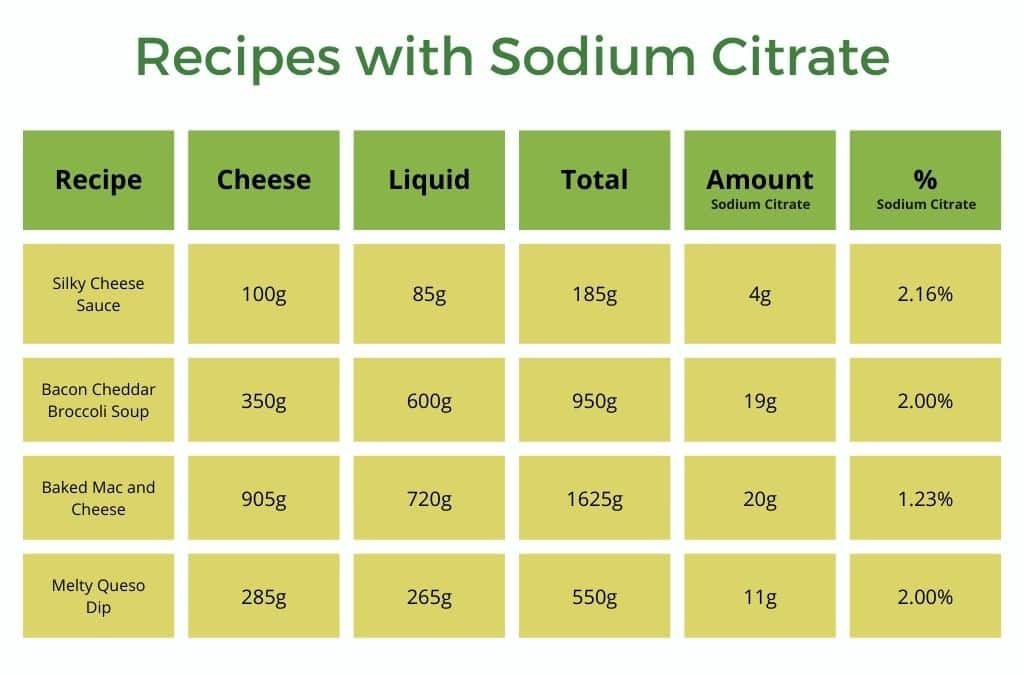
1. Summer Rylander’s Silky Cheese Sauce with Quick-Pickled Jalapeños

Thanks to the versatility of sodium citrate, a number of different cheeses can work here. Summer uses 50g aged Cheddar and Manchego in her recipe together with 4g (3%) of sodium citrate.
READ MORE: Find the complete recipe here →
2. Jason Logsdon’s Bacon Cheddar Broccoli Soup

This simple, hearty recipe hits all the food groups! Jason adds 19g of sodium citrate to this recipe which is equivalent to 2% of total cheese and liquid ingredients.
READ MORE: Find the complete recipe here →
3. Daniel Gritzer’s Baked Mac and Cheese
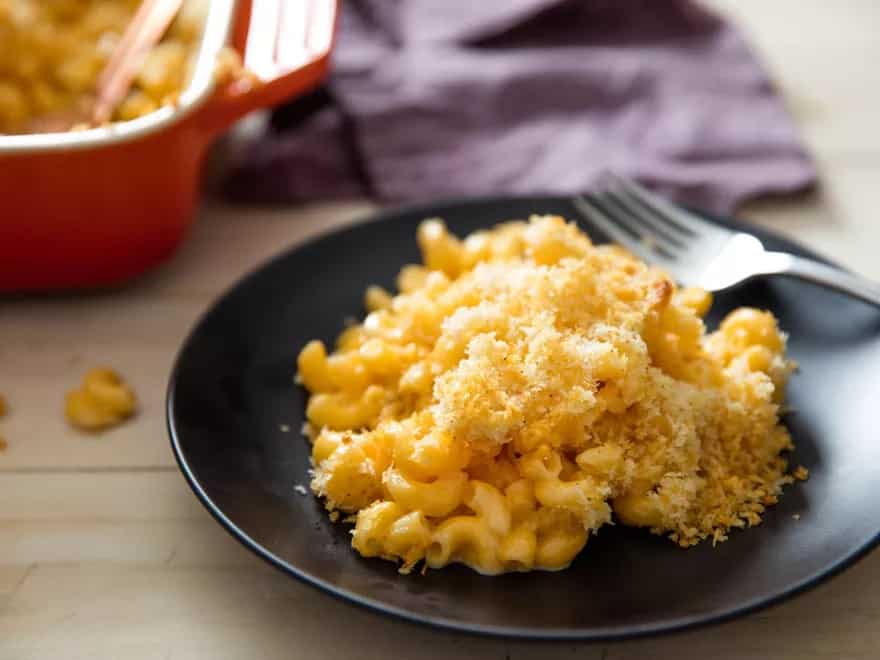
Elevate your mac and cheese game with this scrumptious recipe from Daniel Gritzer. To make his modern take on the classic recipe, Daniel uses 20g of sodium citrate which is equivalent to 1.2%.
While this is lower than the usual range, it protects the final dish from developing an undesirable sour taste.
READ MORE: Find the complete recipe here →
4. Judy Oldfield-Wilson’s Melty Queso Dip

I don’t know about you but I love a recipe that only has three ingredients! The perfect cheese for this dip is Pepper Jack and the cheese’s flavour really shines through.
Judy uses 285g of Pepper Jack, 265ml of cold wheat beer and 11g (2%) of sodium citrate.
READ MORE: Find the complete recipe here →
Conclusion: The secret ingredient is always cheese… and sodium citrate
If you want to take your cheese sauce to the next level, then you need sodium citrate. This incredibly versatile salt will allow you to melt just about any cheese into an oozy, smooth sauce.
The important thing to remember is that you need to be precise with the amount that you’re using.
Have you ever used sodium citrate in your cooking before? I’d love to know that your favourite recipe is. Let me know in the comments.
BUY NOW: Premium, Non GMO, Food Grade Sodium Citrate from Amazon →



